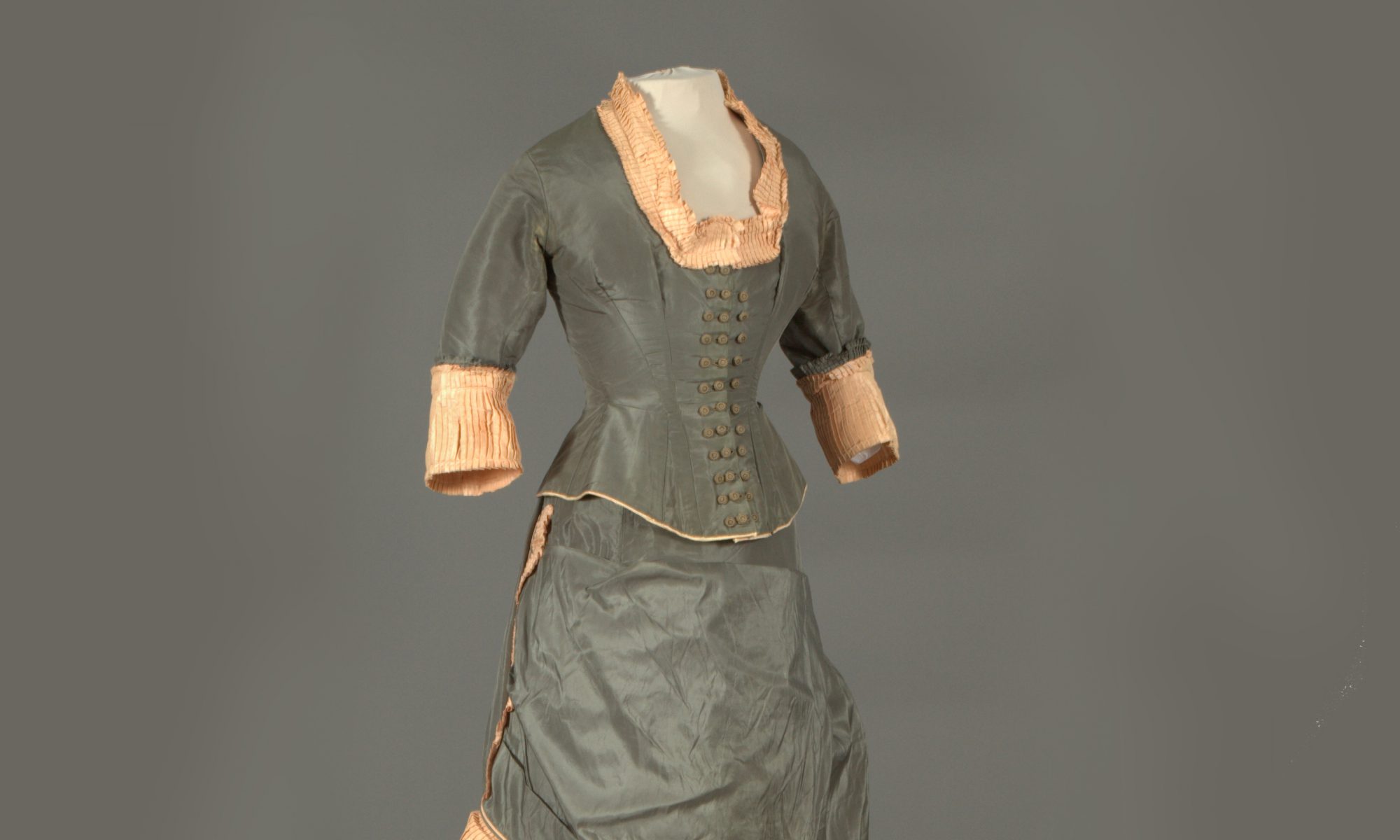Overview of the Collection
The Vassar College Costume Collection (VCCC) is a collection of original historic clothing, dating from the 1830’s to the present. The mission of the collection is twofold: to provide physical artifacts to support the study of the history of fashion design, and to preserve the history of the college. Each object in the collection can serve as an example to teach about fashion’s norms or innovations that developed throughout history, yet each garment also comes to us from Vassar’s community and represents Vassar’s own past, telling us in turn about the history of women’s education and the history of the Hudson Valley.
Vassar’s mission, as stated by Matthew Vassar himself in 1861, is to provide “the means of a thorough, well-proportioned, and liberal education.” Meanwhile, the mission of the Drama Department “is to balance the practice of theater with study of the history, theory, and literatures of drama.” As a part of these two larger bodies, the mission of the VCCC is multidisciplinary in nature, as befits not only a liberal arts education, but also the intersection of varieties of knowledge in the information age. The double mission of the collection has implications that reach farther in this age of multidisciplinary study. A clothing object is not just a piece of cloth, but tells us about the culture and history of the wearer and maker.
The Vassar College Costume Collection is supported by a gift in memory of Ronni Carol Kleinman ’68, facilities donated by Katharine Freston ’52, and gifts in honor of the collection’s founder, to the Holly Hummel Fund for the Historic Costume Collection. The collection currently holds 550 objects with most of the garments dating from the 1880’s to the 1920’s. However, there are several notable earlier pieces. Judging from its style and construction, the earliest dress may date as early as the 1830’s. Each piece in the Vassar College Costume Collection has its own special significance. Many of these items in the collection express the formality of the traditional events they were worn for, and provide an opportunity to compare and contrast with the traditions that persist at the college today. The collection includes examples from a variety of design houses such as Jeanne Lanvin, Maison Levilion, Callot Sœurs, Liberty, Pucci, Schiaparelli, Christian Dior, Pauline Trigère, and Lilly Pulitzer. In contrast, there is also a significant group of objects in the collection that have labels from local dressmakers or stores. The collection is primarily womenswear, representing the relationship of the collection to Vassar’s history as the first of the Seven Sisters to be chartered as a women’s college, founded in 1861.
Use of the Collection
The collection is a wonderful resource for researchers of many different disciplines. The study of these actual historical objects as primary sources of information is not only informative to students of theatrical costume design and fashion history, but informs almost all other academic disciplines. It has been a resource not only to the Drama Department, but also to the departments of Art History, History, Victorian Studies, American Culture, French, English, and Women’s Studies as well as the Chemistry and Economics departments. As most donated items come from Vassar alumnae or other members of the Vassar community, they also provide an opportunity to use the resources of Special Collections at the Vassar Library to make connections between the clothing and archival materials, such as photographs, letters, or journals.
The collection is open to researchers by appointment, and hosts small exhibitions by appointment for visiting groups. In the last few years, there have been several smaller exhibitions for the “Trying on History” program, held for visits from community groups (from the local PASWORD and Project AWARE groups for underprivileged young women) or classes (from Vassar’s French, English, and Women’s Studies departments).
The VCCC holds between one to two exhibitions annually. The most recent was a fashion show held at the Lehman Loeb Art Gallery, which combined modern and historic silhouettes as well as an exhibition of historic garments from the collection. The VCCC also holds an exhibition during reunion weekend every June.
How to Contact us
Efforts have been underway since 2002 to provide online, digital access to all the objects in the collection, including photographs, text, videos, and contextual materials. This digital collection was made available to the Vassar community in the fall of 2008, and was made available to the general public, online, starting in 2011. There is also a blog where individuals may post comments and information to be shared with the Vassar community. Please visit the following links:
Online Access to the Vassar College Costume Collection (a work in progress)
http://costumecollection.vassar.edu/
An Online Exhibition of the Vassar College Costume Collection
http://vcomeka.com/vccc/exhibits/show/fashioning/introduction
News from the Vassar College Costume Collection (faculty and student blog)
http://pages.vassar.edu/vccc/
Trying on History – a blog with photos and news from group visits to the collection
http://tryingonhistory.blogspot.com/
Please write to costumeshop@vassar.edu regarding any further questions or suggestions for the collection.


Those dresses are absolutely stunning. The previous eras definitely knew about style and I am very fond of the old traditional trends.
Over the years we started experiencing more and more with brighter and darker colours. I think that we have a much wider spectrum of colours to choose from in the 21st century.
But all and all, I love these dresses and thank you for sharing this article with us.
Dewan